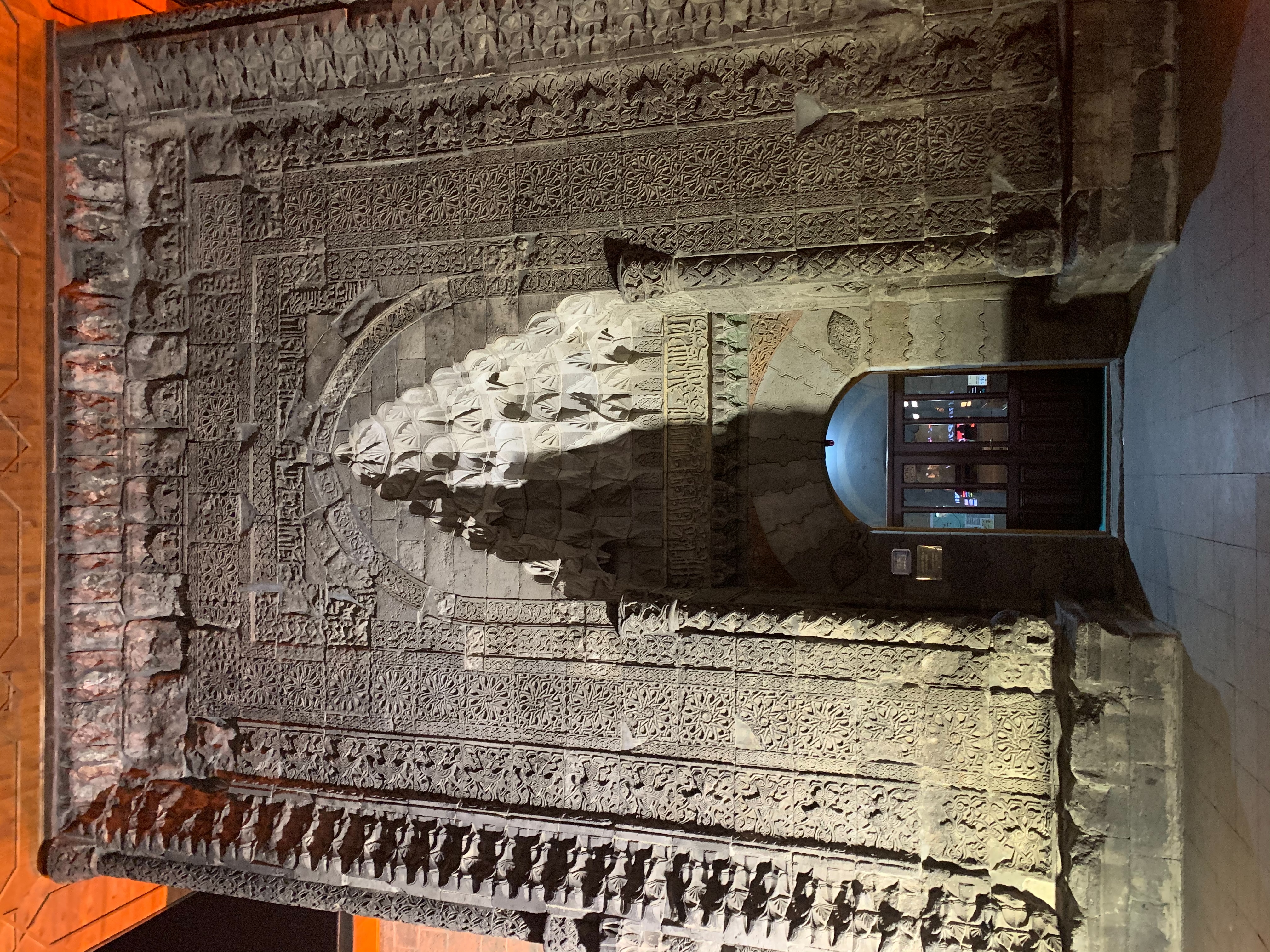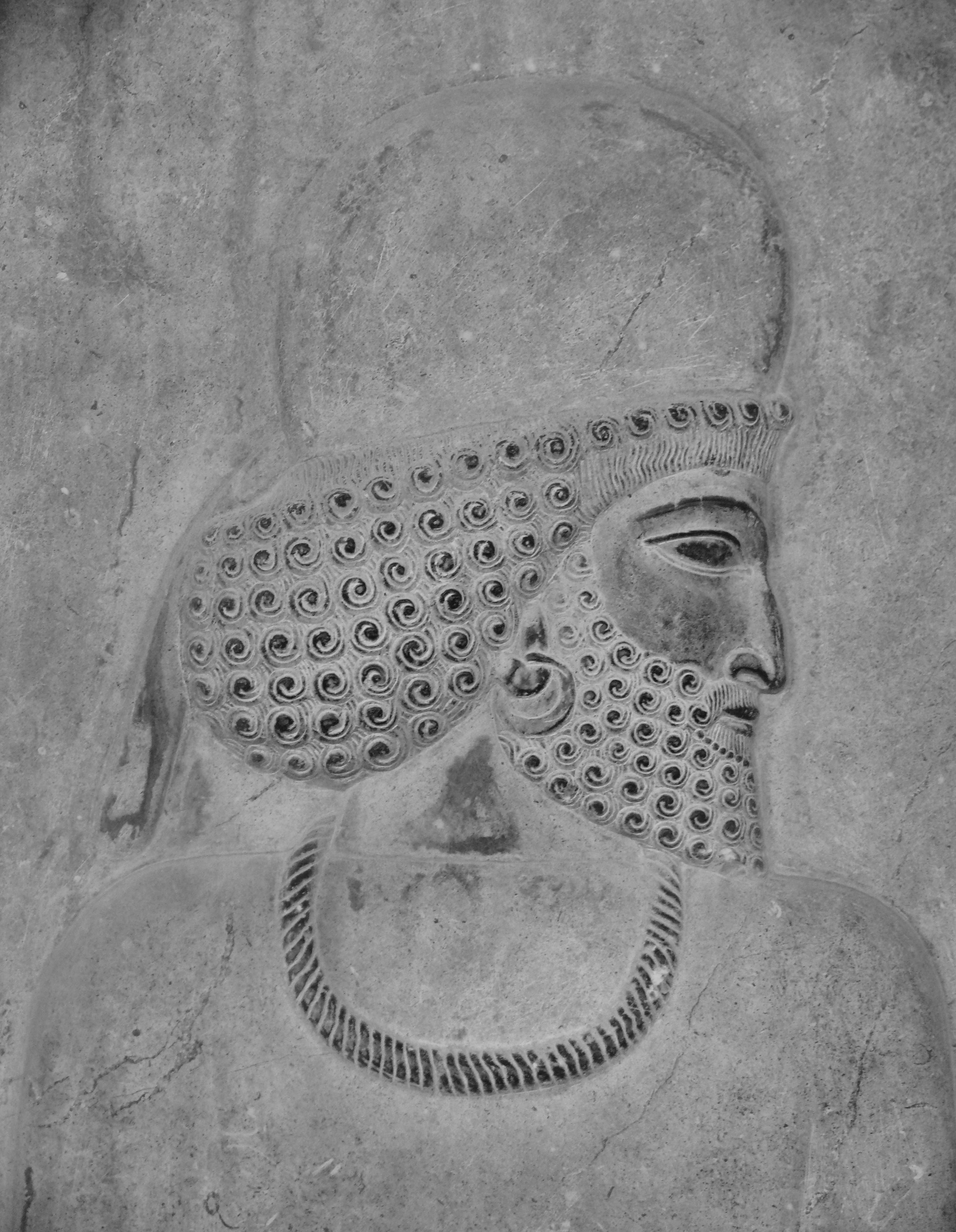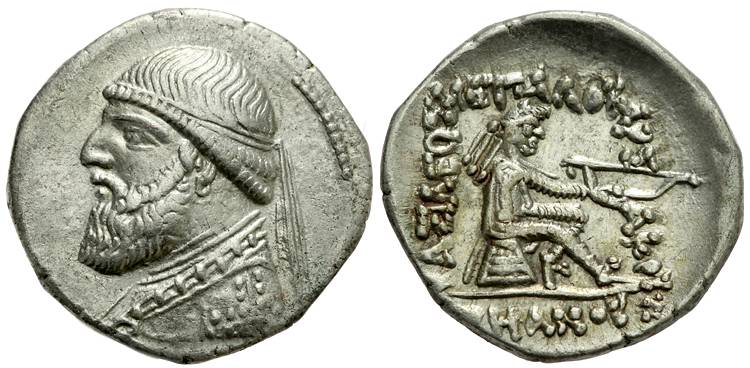|
√áadńĪrkaya, Tercan
√áadńĪrkaya (; ) is a municipality (belde) in the Tercan District, Erzincan Province, Turkey. It had a population of 2,013 in 2021. Bagayarich (also spelled Bagayarińć, Bagarich or Bagarinch) was an ancient locality in the northwestern part of Armenia in the district of Daranali (or DaranaŇāi . In ancient times, it housed the cult centre of the divinity Mihr (Mithra i.e. Mithras), the god of fire. The neighborhoods of the municipality are Camii Kebir, G√∂zeler and Yeni. It is the birthplace of Soghomon Tehlirian, a famous Armenian revolutionary and assassin of Talaat Pasha, one of the architects of the Armenian genocide. On the eve of World War I, before the Armenian genocide, the Armenian Patriarchate of Constantinople indicated that the town's population consisted of 1060 Armenians (in 182 houses), 750 Turks and 125 Zazas. It also harboured a medieval cathedral, a church, an Armenian school with 70 students as well as the ruins of a pagan temple dedicated to Mihr. Statistics ... [...More Info...] [...Related Items...] OR: [Wikipedia] [Google] [Baidu] |
Belde
Belde (literally "town", also known as ''kasaba'') means "large village with a municipality" in Turkish language, Turkish. All Turkish province centers and district centers have municipalities, but the Villages of Turkey, villages are usually too small to have municipalities. The population in some villages may exceed 2000 and in such villages a small municipality may be established depending on residents' choice. Such villages are called ''belde''. Up to 2014 the number of ''belde'' municipalities was about 1400. On 30 March 2014 by the act no. 6360 all villages (those with and without municipality) were included in the urban fabric of the district municipalities in 30 provinces. Thus ''belde'' municipalities in 30 provinces were abolished. The number of abolished ''belde'' municipalities is 1040. Presently, in 51 provinces, which are not in the scope of the act no 6360, there are still 394 ''belde'' municipalities. See also *2013 Turkish local government reorganisation *Metropo ... [...More Info...] [...Related Items...] OR: [Wikipedia] [Google] [Baidu] |
Teotig
Teotoros "Teotig" Labdjindjian (, 1873; √úsk√ľdar, Constantinople (Istanbul), Ottoman Empire ‚Äď 1928; Paris, France) was an Armenian writer and publisher best known for his Armenian language almanac, '' Amenun Daretsuytsi'' (in Armenian ‘Ī’ī’ß’∂’ł÷ā’∂ ’Ź’°÷Ä’•÷Ā’ł’Ķ÷Ā’® meaning "Everyone‚Äôs Almanac"). It was published annually, mostly in Constantinople, between 1907 and 1929. Teotig was born in 1873 to Armenian parents in √úsk√ľdar, a district of Constantinople situated on the Asiatic side of the Bosphorus. He married writer ArŇüaguhi Cezveciyan in 1902. Aside from his yearly Almanac production, Teotig was also known for his "Golgotha of the Armenian Clergy", a compilation of sources analyzing the priests, clergymen, and monks who were massacred during the Armenian genocide. He ended up compiling and documenting 1252 witnesses to the massacres of the clergy. Teotig was assisted in his enterprise by his British-educated wife, Arshaguhi Teotig (1875-1921)‚ÄĒherself a writer an ... [...More Info...] [...Related Items...] OR: [Wikipedia] [Google] [Baidu] |
Artaxata
Artashat (), Greek language, Hellenized as Artaxata () and Artaxiasata (), was a major city and commercial center of ancient Kingdom of Armenia (antiquity), Armenia that served as the capital of the Kingdom of Armenia (antiquity), Kingdom of Armenia from its founding in 176 BC to 120 AD, with some interruptions. It was founded during the reign of King Artaxias I (Artashes), the founder of the Artaxiad dynasty. Its ruins are located in the Ararat Province of modern-day Armenia, on the left bank of the Aras (river), Araks River, at the site of the monastery of Khor Virap. It was destroyed and rebuilt several times from the 1st to the 5th centuries AD, before finally being abandoned. The remains of the great walls of the city and some of its buildings are still visible today. Name The name of the city is of Iranian languages, Iranian origin. Artaxata/Artashat can be interpreted as meaning "the joy of Asha, ''Arta'' (truth)," although it is actually a shortening of ''ArtaxŇ°as-Ň ... [...More Info...] [...Related Items...] OR: [Wikipedia] [Google] [Baidu] |
Erzurum
Erzurum (; ) is a List of cities in Turkey, city in eastern Anatolia, Turkey. It is the largest city and capital of Erzurum Province and is 1,900 meters (6,233 feet) above sea level. Erzurum had a population of 367,250 in 2010. It is the site of ancient Theodosiopolis. The city uses the double-headed eagle as its coat-of-arms, a motif that has been a common symbol throughout Anatolia since the Bronze Age. Erzurum has winter sports facilities, hosted the 2011 Winter Universiade, and the 2023 Winter Deaflympics (in March 2024). Name and etymology The city was originally known in Armenian language, Armenian as Karno K'aghak' (), meaning city of Karin, to distinguish it from the district of Karin (wikt:‘Ņ’°÷Ä’ę’∂, ‘Ņ’°÷Ä’ę’∂). It is presumed its name was derived from a local tribe called the Karenitis. Darbinian, M. "Erzurum," Armenian Soviet Encyclopedia. Yerevan: Armenian Academy of Sciences, 1978, vol. 4, p. 93. An alternate theory contends that a local princely family, the Kams ... [...More Info...] [...Related Items...] OR: [Wikipedia] [Google] [Baidu] |
Satala
Located in Turkey, the settlement of Satala ( ''SataŇā'', ), according to the ancient geographers, was situated in a valley surrounded by mountains, a little north of the Euphrates, where the road from Trapezus to Samosata crossed the boundary of the Roman Empire, when it was a bishopric, which remains a Latin Catholic titular see. Later it was connected with Nicopolis by two highways. Satala is now Sadak, a village of 348 inhabitants (2022), in the Kelkit District of G√ľm√ľŇühane Province in Turkey. History This site must have been occupied as early as the annexation of Lesser Armenia under Vespasian. Trajan visited it in 115 and received the homage of the princes of the Caucasus and the Euxine. Probably it was Trajan who placed there the Legio XV ''Apollinaris'' and began the construction of the great ''castra stativa'' (permanent camp) which it was to occupy till the 5th century. The town must have sprung up around this camp; in the time of Ptolemy it was already important ... [...More Info...] [...Related Items...] OR: [Wikipedia] [Google] [Baidu] |
Media (region)
Media (, Middle Persian: ''MńĀd'') is an Iron Age region of north-western Iran, best known for having been the political and cultural base of the Medes. During the Achaemenid period, it comprised present-day Iranian Azerbaijan, Iranian Kurdistan and western Tabaristan. As a satrapy under Achaemenid rule, it would eventually encompass a wider region, stretching to southern Dagestan in the north. However, after the wars of Alexander the Great, the northern parts were separated due to the Partition of Babylon and became known as ''Atropatene'', while the remaining region became known as ''Lesser Media''. History Under the Medes In 678 BC, Deioces united the Medes, Median tribes of Media and made the first Iran, Iranian Empire. His grandson Cyaxares managed to unite all Iranian peoples, Iranian tribes of History of Iran, Ancient Iran and made his empire a major power. When Cyaxares died he was succeeded by his son, Astyages, who was the last king of the Median Empire. Under the Ac ... [...More Info...] [...Related Items...] OR: [Wikipedia] [Google] [Baidu] |
Hamadan
Hamadan ( ; , ) is a mountainous city in western Iran. It is located in the Central District of Hamadan County in Hamadan province, serving as the capital of the province, county, and district. As of the 2016 Iranian census, it had a population of 554,406 people in 174,731 households. Hamadan is believed to be among the oldest Iranian cities. It was referred to in classical sources as Ecbatana ( Old Persian ). It is possible that it was occupied by the Assyrians in 1100BCE; the Ancient Greek historian, Herodotus, states that it was the capital of the Medes, around 700BCE. Hamadan is situated in a green mountainous area in the foothills of the 3,574-meter Alvand Mountain, in midwestern Iran. The city is 1,850meters above sea level. It is located approximately southwest of Tehran. The old city and its historic sites attract tourists during the summer. The major sights of this city are the Ganj Nameh inscription, the Avicenna monument and the Baba Taher monument. The m ... [...More Info...] [...Related Items...] OR: [Wikipedia] [Google] [Baidu] |
Ecbatana
Ecbatana () was an ancient city, the capital of the Median kingdom, and the first capital in History of Iran, Iranian history. It later became the summer capital of the Achaemenid Empire, Achaemenid and Parthian Empire, Parthian empires.Nardo, Don. "Ecbatana." ''The Greenhaven Encyclopedia of Ancient Mesopotamia'', edited by Robert B. Kebric, Greenhaven Press, 2007, pp. 97-98. ''Gale In Context: World History'', link.gale.com/apps/doc/CX3205100129/WHIC?u=wylrc_uwyoming&sid=summon&xid=e9682d3c. Accessed 20 Nov. 2022. It was also an important city during the Seleucid Empire, Seleucid and Sasanian Empire, Sasanian empires. It is believed that Ecbatana is located in the Zagros Mountains, the east of central Mesopotamia, on Hagmatana Hill (Tappe-ye HagmatńĀna). Ecbatana's strategic location and resources probably made it a popular site even before the 1st millennium BC. Along with Athens in Greece, Rome in Italy and Susa in Iran, Ecbatana is one of the few ancient cities in the world th ... [...More Info...] [...Related Items...] OR: [Wikipedia] [Google] [Baidu] |
Roman Empire
The Roman Empire ruled the Mediterranean and much of Europe, Western Asia and North Africa. The Roman people, Romans conquered most of this during the Roman Republic, Republic, and it was ruled by emperors following Octavian's assumption of effective sole rule in 27 BC. The Western Roman Empire, western empire collapsed in 476 AD, but the Byzantine Empire, eastern empire lasted until the fall of Constantinople in 1453. By 100 BC, the city of Rome had expanded its rule from the Italian peninsula to most of the Mediterranean Sea, Mediterranean and beyond. However, it was severely destabilised by List of Roman civil wars and revolts, civil wars and political conflicts, which culminated in the Wars of Augustus, victory of Octavian over Mark Antony and Cleopatra at the Battle of Actium in 31 BC, and the subsequent conquest of the Ptolemaic Kingdom in Egypt. In 27 BC, the Roman Senate granted Octavian overarching military power () and the new title of ''Augustus (title), Augustus'' ... [...More Info...] [...Related Items...] OR: [Wikipedia] [Google] [Baidu] |
Sivas
Sivas is a city in central Turkey. It is the seat of Sivas Province and Sivas District.ńįl Belediyesi Turkey Civil Administration Departments Inventory. Retrieved 22 May 2023. Its population is 365,274 (2022). The city, which lies at an elevation of in the broad valley of the KńĪzńĪlńĪrmak River, KńĪzńĪlńĪrmak river, is a moderately sized trade centre and industrial city, although the economy has traditionally been based on agriculture. Rail repair shops and a thriving manufacturing industry of rugs, bricks, cement, and cotton and woolen Textile, textiles form the mainstays of the city's economy. The surrounding region is a cereal-producing area with large deposits of iron ore which are worked at Divrińüi. Sivas is also a Communications system, communications hub for the north‚Äďsouth and east‚Äďwe ... [...More Info...] [...Related Items...] OR: [Wikipedia] [Google] [Baidu] |
Tuzla Su
Tuzla (, , ) is the List of cities in Bosnia and Herzegovina, third-largest city of Bosnia and Herzegovina and the administrative center of Tuzla Canton of the Federation of Bosnia and Herzegovina. As of 2013, it has a population of 110,979 inhabitants. Tuzla is the economic, cultural, educational, health and tourist centre of northeast Bosnia. It is an educational center and is home to two universities. It is also the main industrial machine and one of the leading economic strongholds of the country with a wide and varied industrial sector including an expanding service sector thanks to its salt lake tourism. The city of Tuzla is home to Europe's only salt lake as part of its central park and has more than 350,000 people visiting its shores every year. The history of the city goes back to the 9th century; modern Tuzla dates back to 1510 when it became an important garrison town in the Ottoman Empire. In Bosnia and Herzegovina, Tuzla is also regarded as one of the most multicul ... [...More Info...] [...Related Items...] OR: [Wikipedia] [Google] [Baidu] |
Vican
Vican, Vińáan and Vińćan are surnames. Notable people with these surnames include: *Ante Vican (1926‚Äď2014), Croatian actor *Frano Vińáan Frano Vińáan (born 24 January 1976 in Dubrovnik) is a Croatian water polo player who competed in the 2000 Summer Olympics, in the 2004 Summer Olympics, and in the 2008 Summer Olympics. He was also a member of Croatia's gold medal winning team a ... (born 1976), Croatian water polo player * Michal Vińćan (1925‚Äď1986), Slovak footballer {{surname Surnames of Croatian origin ... [...More Info...] [...Related Items...] OR: [Wikipedia] [Google] [Baidu] |








